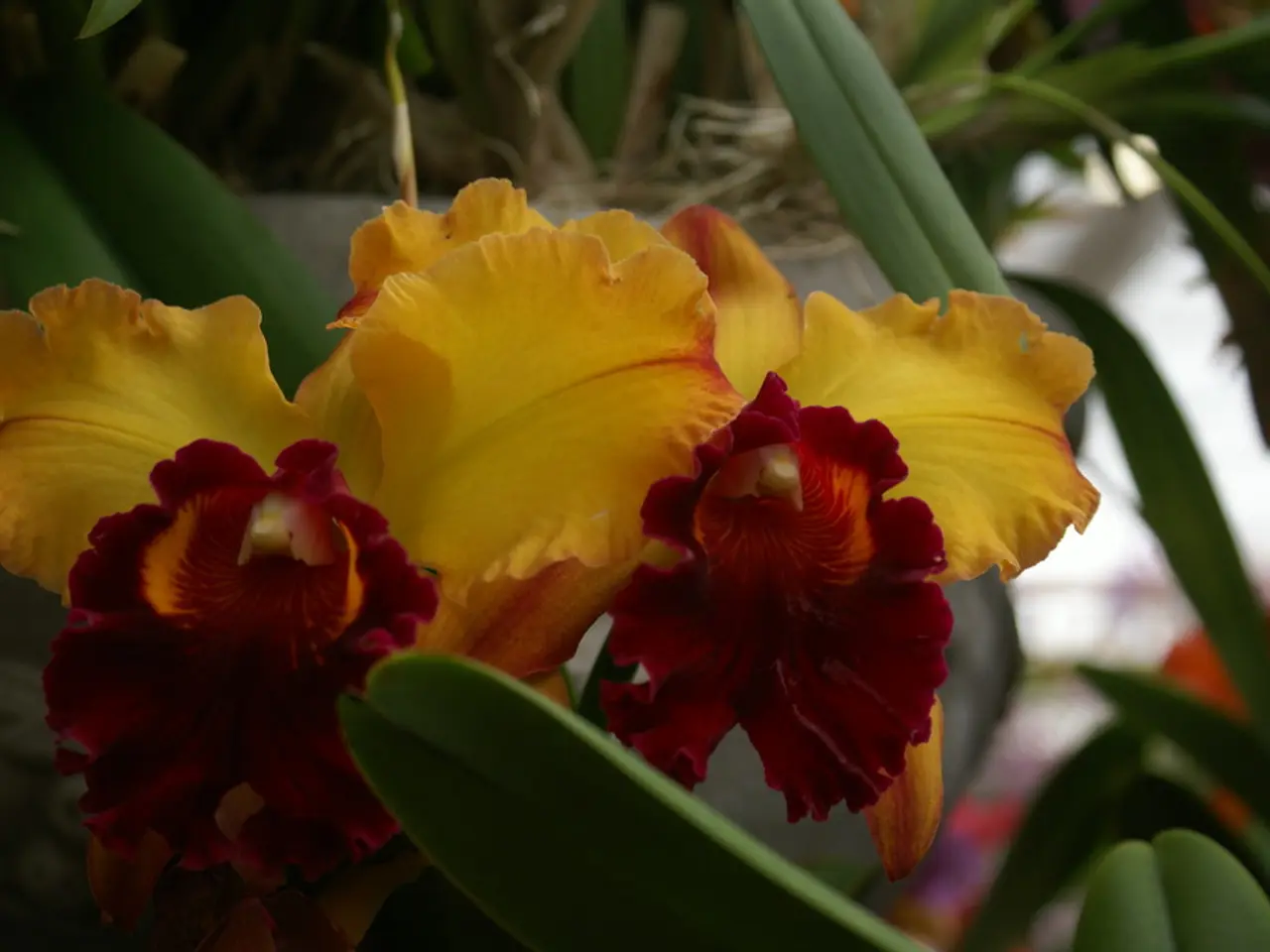How-to Manual on Growing and Nurturing Hyacinths!
Hyacinths, with their vibrant colours and sweet aroma, are a delightful addition to any garden or indoor space. To ensure healthy growth and beautiful blooms year after year, it's essential to understand how to care for hyacinth bulbs during winter and after they have stopped blossoming.
In the garden or containers, hyacinths prefer a sunny or partially shady location, aiming for at least 6 to 8 hours of sunlight per day. For optimal aroma, they should be planted in large groupings. The bulbs need loose, well-drained soil and won't tolerate damp conditions. If your soil is lacking in nutrients, mix in a 5-5-10 delayed release plant food before planting the bulbs.
When planting, choose large, fat bulbs that are free of illness and rot. Plant the bulbs three to four times deeper than their height, with the pointy side facing up. After planting, thoroughly water the area and keep watering if there isn't regular rain, but let the ground dry out between waterings.
During winter, hyacinths need a period of dormancy to rest and gather energy for the following year's blooms. In colder zones, winter protection helps. Cover soil with peat or mulch for insulation. If planted outdoors, mulch or wrap containers (e.g., with bubble wrap) to protect from frost.
Indoors, potted hyacinths should be kept in a cool, dark, and humid place with temperatures between 10 and 18 °C to simulate winter conditions. Do not oversaturate when watering; keep the soil slightly moist but not waterlogged to avoid bulb rot.
After blooming, watering should be moderated. Reduce watering as bulbs enter dormancy and keep soil moist but avoid waterlogging. Fertilizing can be done before planting, enriching soil or pot with good compost or balanced bulb fertilizer, and after blooming, a light fertilizer while leaves are still green can support bulb nourishment for next season.
When the foliage has died back, remove faded flower heads promptly to prevent seed formation, which weakens bulbs. Allow foliage to die back naturally (about 6–8 weeks after blooming) so bulbs can restore energy reserves. After leaves have yellowed and dried, lift bulbs from the garden or pots, clean off soil, dry them thoroughly, and store in a cool, dry, well-ventilated place until replanting season.
If bulbs show signs of disease or decay, discard them to prevent problems in following seasons. By following these guidelines, hyacinth bulbs will be well cared for during winter and after blooming, ensuring healthy growth and vibrant flowers year after year.
Hyacinths pair well with other spring-blooming bulbs such as tulips and daffodils, making them an excellent choice for creating a colourful and aromatic garden. Today, roughly 60 cultivars of hyacinths are available for commercial cultivation, offering a wide variety of colours and fragrances to suit every taste.
---
*References: Information mainly from detailed gardening resources on hyacinth care[1][3][5], plus general watering and disposal guidelines[2][4].*
- Hyacinths prefer a sunny or partially shady location for optimal growth, aiming for at least 6 to 8 hours of sunlight daily.
- Plant hyacinth bulbs three to four times deeper than their height, with the pointy side facing up, in loose, well-drained soil to avoid damp conditions.
- During winter, hyacinths need a period of dormancy for energy restoration. In colder zones, winter protection like peat or mulch is necessary for insulation.
- Indoors, potted hyacinths should be kept in a cool, dark, and humid place, with temperatures between 10 and 18 °C, and watered moderately to avoid bulb rot.
- After blooming, hyacinths require less watering as they enter dormancy, keeping soil moist but avoiding waterlogging. Fertilizer can be added before planting or after blooming to support bulb nourishment.
- After the foliage has died back, remove faded flower heads to prevent seed formation, and store bulbs in a cool, dry, well-ventilated place until replanting season, discarding any diseased bulbs to prevent problems in the following seasons.




